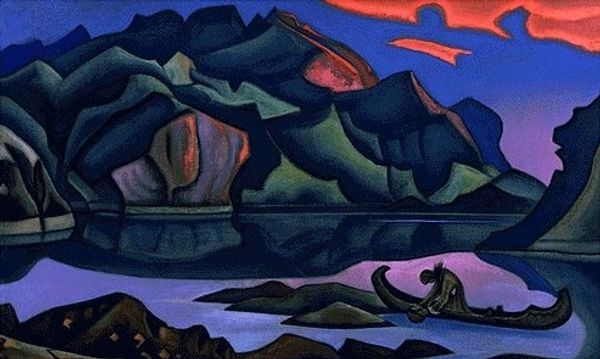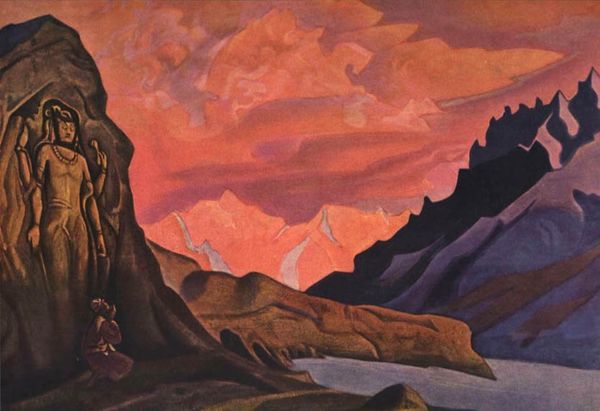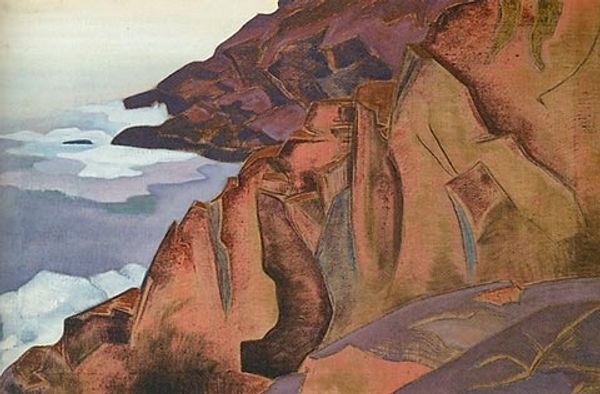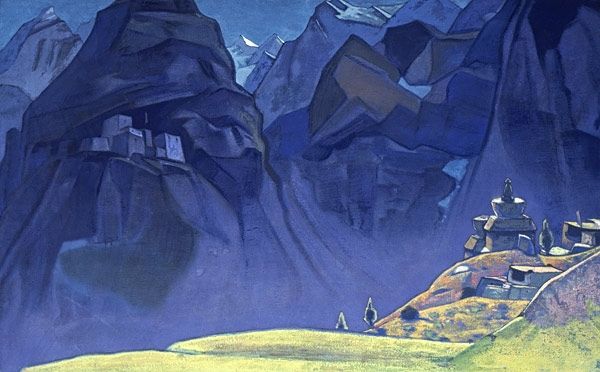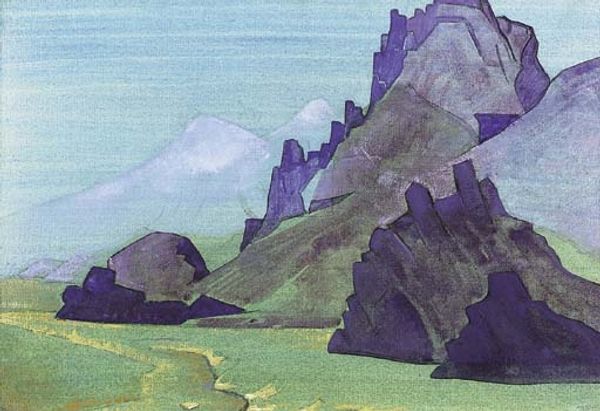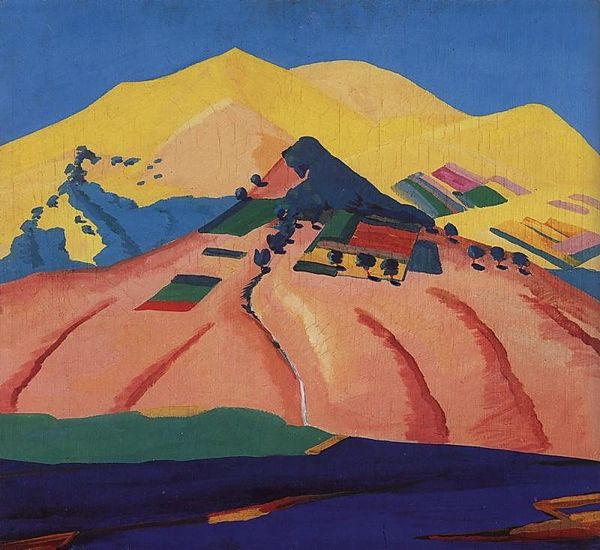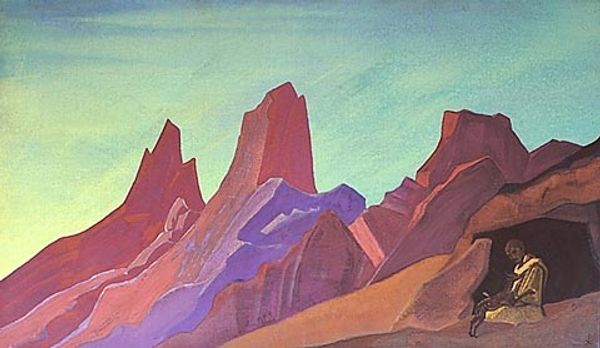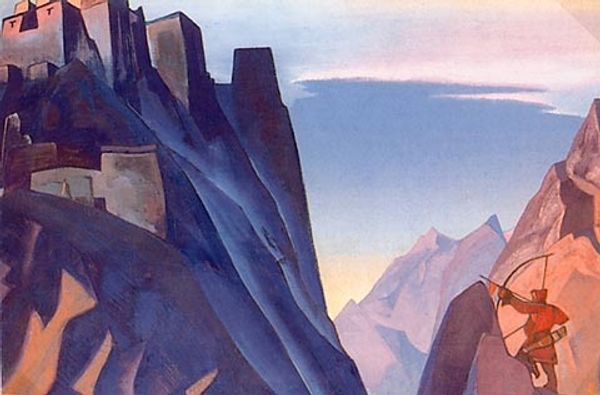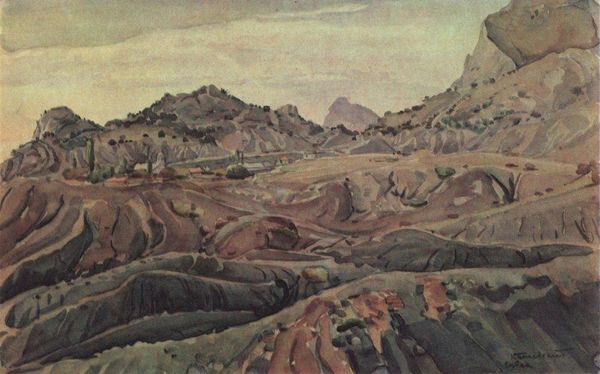
Dimensions: 91 x 124 cm
Copyright: Public domain
Editor: Here we have Nicholas Roerich's "Ajanta. The Rock Temples," painted in 1938. The sharp angles and unusual colors give it a somewhat ominous and dreamlike quality. What stands out to you in this piece? Curator: The power of this painting lies in its embodiment of cultural memory. Look at the mountains – they're not just mountains, but repositories of centuries of spiritual practice, almost like natural cathedrals. The temples carved into them speak volumes about humanity's desire to connect with something greater. Editor: I hadn't really thought of the mountains that way. It’s interesting how the temples blend almost seamlessly into the landscape. Curator: Exactly! And consider Roerich's use of color. The vibrant yellow sky, juxtaposed with the dark blues and greens of the rocks, creates a sense of otherworldly spirituality. This jarring juxtaposition of light and shadow perhaps symbolize enlightenment found amidst darkness. The temples themselves, though physical structures, almost become symbols of internal transformation. How does the archway itself speak to you? Editor: I see it like a gateway, a portal... it's framed by shadow but it suggests access to somewhere sacred or hidden. It also could represent shelter from some type of storm? Curator: Indeed, Roerich expertly uses symbolic forms to reveal these meanings. The composition embodies how structures, whether built or natural, echo and reinforce belief systems over time. This place retains an emotional gravity. It begs a viewer to delve into history's subconscious. Editor: I now look at it differently! I initially responded to the bold colors, but learning about the symbolism has opened my eyes to its deeper significance. Curator: It shows how Roerich intertwined the earthly and the spiritual. And how that dialogue continues to this day.
Comments
No comments
Be the first to comment and join the conversation on the ultimate creative platform.
